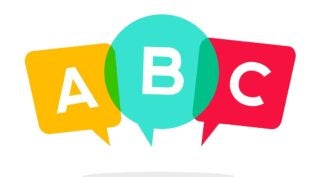Small Business Funding Options: A Comprehensive Overview
By: Biz2Credit.com

Like loans to individuals, small business loans are designed to provide needed capital to companies. However, with loans to small businesses, there are many more options and loan types. At a high level, business loans are generally categorized by the length or duration of the loan repayment period, long-term loan versus short-term funding.
Small business loans are simply funds paid out to companies that require the company to repay the loan with interest and applicable fees over a specified period of time. Because businesses vary in size and function, not all business loans are right for all businesses. Therefore, business loans involve many options and criteria for structuring including:
- Use of proceeds,
- Capital disbursements,
- Repayment period,
- Interest rate or factor rates; and,
- Fees
The main type of business loans are:
- Fixed term loans (long term and short term) – These types of loans are traditional-type installment loans. The borrower receives a fixed amount of cash all at once and agrees to pay back a fixed amount (installment) over an agreed amount of time.
- Lines of Credit – Arrangements between lenders and borrowers to make a fixed amount of capital available to be used when needed. A business line of credit is very similar to a business credit card in that respect. The borrower draws funds only when needed up to a predetermined amount. Interest is paid only on the amounts borrowed and there may be additional fees for servicing.
- Merchant Cash Advances (MAC) –A Merchant cash advance is a form of small business funding, similar to fast cash advances that provides companies with quick access to working capital. A business owner sells a portion of its future credit card revenue to an MCA firm at a discount.
This type of small business financing can be classified as “factoring” or “credit card receivables funding.” An MCA is not a loan; there are no personal guarantees required. - Invoice Factoring –Is a type of loan similar to Merchant Cash Advance that allows a company to borrow amounts of outstanding invoices (receivables) from customers that have not yet paid. The lender essentially purchases the customer invoices at a discount and the borrower receives funds immediately. Once the customer pays the invoices, the borrower pays back the lender with those proceeds, plus a factoring fee.
- Equipment Loans –Entrepreneurs and new business owners often make the mistake of using their own money to purchase expensive equipment. They might not realize that there is a more efficient way to get the equipment they need without decreasing critical business capital. Equipment leasing is a much cheaper and easier alternative for financing equipment purchases. Any business that utilizes equipment can take advantage of this product.
Use of Loan Proceeds
The US Small Business Administration (SBA) also has programs designed to promote US companies by guaranteeing loans made to qualifying small businesses by various lending institutions.
The most common type of loan is generally referred to as a working capital loan. These loan types are good for any business in need of working capital to promote growth. They can be used to purchase equipment, expand to new facilities, or even advertise. They are also referred to as general purpose loans and are not earmarked for a specific use.
Small business loans can also be obtained by start-up companies as an alternative to venture capital or selling equity to investors. As highlighted above, small business loans are also critical for established businesses who experience gaps in sales, collections or have seasonal cycles where cash-flow can be tight, or when they are unable to manage day-to-day expenses or meet short-term obligations like payroll. Business loans can also be a catalyst for growth, helping companies expand or acquire other business entities.
What to Expect When Applying for a Business Loan
Once you have decided on your small business funding option, traditional lenders will use a standard set of criteria to make a loan determination for your company. Many banks use very similar templates to determine loan eligibility and rely upon loan originators to process the information manually. Most likely you will be asked to provide the following information about your company:
- Length of time in business
- A copy of your business plan with revenue projections
- Two years of financial and bank statements
- Annual revenues,
- Gross profit
- Net profits
- Value of any collateral, and
- Personal credit score
Traditional lending institutions like large banks, and even some community banks and credit unions are likely to offer borrowers the most favorable terms. However, they are also likely to have the strictest borrowing criteria. In many cases, if even one of the items listed above is not up to standards, they may reject the business loan request. These lending institutions often rely upon a subjective, human-based evaluation that may be subject to human error and lengthy consideration periods.
Fortunately, a new breed of lenders called FinTech (Financial Technology) Lenders have emerged and allowed for loans to be made based upon more lenient, objective criteria. FinTech firms have developed lending models based on sophisticated algorithms that may overlook a company’s shortcomings in certain areas and grant a loan based on overall risk-factors instead of disqualifying based on a single risk factor.
While that has been good news for many companies previously denied credit, there are a few caveats. Borrowers should always be aware of the true cost of lending. FinTech firms do offer more lenient terms in many cases, however, they may also charge more to borrow.
Whether you are borrowing from a traditional lending institution, like a bank or from a FinTech firm, always compare the costs of borrowing. This is the same for any loan. Companies seeking loans should compare loan amounts, interest rates (and Annual percentage rate (APR)), terms and durations, fees and any penalties such as pre-payment penalties. In the case invoice factoring and merchant cash advances, costs can skyrocket if the term is too long. These are short-term instruments and borrowers should understand the consequences of the costs involved. These borrowing cost analyses should be the basis in choosing between small business funding options.
When it comes to small business funding options, it’s important to understand the lending marketplace. The emergence of FinTech firms has altered the landscape for small business funding options. Just like the home mortgage market, or the medical health market, the business lending market has direct lenders such as banks and aggregators, including FinTech firms who use technology to match you with a lender from many choices, almost like an exchange-type marketplace does. Many FinTech firms are similar to home mortgage brokers who shop around for you. This group of actors constitutes a lending marketplace.
Traditional or direct lenders such as your bank mainly deal in installment loans (term loans) and lines of credit. It’s rare for this type of lender to issue loans to start-ups unless there is a prior relationship and a track-record with the institution. They usually are lending their own money and therefore have very strict lending standards. The FinTech Marketplace searches virtually all loan types from many different lenders. In the case of companies with weaker credit profiles, they are taking more risk so the trade-off is usually (but not always) a higher cost of borrowing.
So how do you choose between the small business funding options available in the overall marketplace? As with any loan, borrowers should take time to understand their needs. This includes: size of loan, use of proceeds and expected return on investment, ability to pay back and time needed to repay the loan. Borrowers should consider alternatives to borrowing and whenever possible ask about loans backed by the SBA. SBA-backed loans are harder to qualify for, but usually offer the best rates and terms for marginal credit risk companies.
Available Loan Types
Having an awareness of the business loan marketplace is important for borrowers because of the increased access to a diverse range of borrowing options that are now available. Let’s take a closer look at the most popular small business funding options. There are many different types of small business loans. Loans issued by private lenders can take the following forms:
- Short-Term Loans– Loans taken to bridge short-term gaps in cash flow such as seasonal lulls in sales or unexpected, extraordinary expenses may require immediate access to additional capital. In these cases, a short-term loan may be appropriate. Short-term loans typically have a one-year term, however, many businesses tend to repay this type of loan within one business quarter. The most common type of short-term loan has terms similar to traditional installment loan with duration, interest rate and repayment terms pre-determined by the lender.Qualifying for a Short-Term Business Loan – Since short-term loans tend to have lower loan amounts, interest rates may be higher or lower depending on the economic cycle. To qualify, most lending institutions will ask for prior loan re-payment and cash flow histories for the trailing 3-5 year period, income statements for the same period and possibly collateral. In a normal economy, interest rates for short-term loans will be higher than long-term ones, but in a recessionary economy, when prime lending rates are falling, this can be reversed.
- Long-Term Loans– These typically have a well defined repayment horizon of 3-10 years. It is possible for these loans to be extended up to 20 years, depending on their use. Long-term loans generally will be used for capital expenses for items that will be amortized over a long period of time. Loan amounts can vary between $25,000 up to $250,000.Qualifying for a Long-Term Business Loan – The approval process is generally more rigorous as the amount of the loan increases. As a rule, the term of a loan should be correlated to the intended use of the proceeds and the life-span of the items being purchased. Comparisons to lease vs. purchase and other actuarial analysis. Borrowers should be prepared to provide extensive financial records, data and histories.
- Line of Credit– A business line of credit is a very versatile asset for a small business. A business line of credit functions very much like a credit card in many ways. It guarantees cash on hand at a moment’s notice, to be used for anything from repairs to the purchase of new equipment. This type of loan will generally be used like a short-term loan, however, funds are drawn only as needed and the borrower only pays interest on the amounts borrowed.Establishing a line of credit when a business is healthy and vibrant is considered a best practice for companies, as it can be a type of insurance policy to protect against unforeseen disruption to cash flow. Establishing a line of credit before there is a need is an example of sound financial planning.
Qualifying for a Business Line of Credit – Lenders will generally evaluate factors such as the owner’s personal assets and credit score, earnings, collateral and equity position, cash flow statements, and multiple sources of repayment. It is often suggested that a company actually draw on their line of credit and repay the amounts to build a strong repayment history and raise borrowing limits, even if it is not needed by the company.
- Invoice Financing– Many lenders will give you a loan against the balance of your outstanding invoices, which basically means they’re advancing you the funds against your accounts receivable.
- Merchant Cash Advance– Typically marketed towards businesses whose revenue comes mainly from credit and debit card sales, providers say this is technically not a loan. They give you an amount of cash upfront in exchange for some of your future sales, which can be structured in two ways: either through fixed daily or weekly debits, plus fees, from your bank account –Automated Clearing House withdrawals– or the repayment structure can be tied to a percentage of your credit/debit transactions.
- Equipment Loans– These are loans taken out to buy necessary equipment for your business. However, instead of coming up with collateral, the equipment becomes the collateral itself. If the loan defaults, the lender simply repossess the equipment. They are quick loans that require little documentation.
Qualifying for an Equipment Loan – Using equipment as collateral, institutions lend to business owners at lower rates with longer terms than unsecured financing. A typical equipment loan term extends anywhere from 7 to 10 years (based on the residual value) compared to an unsecured line of credit term of 2 to 5 years. Equipment financing also allows small business owners to claim depreciation on their taxes as they amortize the asset. An equipment financing loan is available as a floating or a fixed rate line and does not require line rotation.
In reality, since the emergence of FinTech lenders, there are literally an infinite number of loan types as almost any loan can be specifically tailored to a company’s needs. Aside from those mentioned above, the Small Business Administration also backs low-interest-rate loans for small businesses. Contrary to popular belief, the SBA itself does not issue loans. Banks, credit unions, community development organizations and other partners do. What the SBA does is provide a guarantee of up to 85% for loans under $150,000 and 75% for loans over $150,000. This reduces the risk for lenders and raises borrower’s’ chances of getting approved, as well as receive lower interest rates and longer repayment terms than they might otherwise qualify for. Since they’re essentially guaranteed by the SBA, their rates and terms are generally more favorable to borrowers, but this comes with stricter qualifying requirements.
What can business loans be used for?
Business loans can be used for a number of different operational needs. Some traditional bank loans may have specific conditions or limits on usage, but loans and financing designed specifically for small businesses can be used for nearly everything, including equipment purchases, inventory, daily expenses, and payroll.
Other uses can encompass the purchase of new technology, hiring, marketing or advertising, education and training, and expansion. In the case of loans guaranteed by the Small Business Administration, there are generally specific permitted usages.
SBA 7(a) loan proceeds can be used to pay long and short-term operational expenses, to purchase real estate, as revolving funds, to renovate or construct a new building, to establish a new business, and under some circumstances, to refinance existing business debt. These funds cannot be used to refinance existing debt where the lender would receive a loss, to repay delinquent taxes, to affect a partial change of business ownership, to reimburse funds to any owner, or for any purpose that the SBA doesn’t consider sound.
SBA 504 loans, or Community Development Corporation (CDC) loans, are strictly for real estate and equipment purchases. This program is unique in that it pairs a CDC with a lender, and they finance the loan jointly. Finally, the SBA also features microloans, in which they provide funds to nonprofit organizations, who in turn, lend the money to the business.












